 Your new post is loading...
 Your new post is loading...

|
Scooped by
Gust MEES
|

|
Scooped by
Gust MEES
|

|
Scooped by
Gust MEES
|
April 5, 2019
Not so long ago, graphene was the great new wonder material. A super-strong, atom-thick sheet of carbon “chicken wire,” it can form tubes, balls, and other curious shapes. And because it conducts electricity, materials scientists raised the prospect of a new era of graphene-based computer processing and a lucrative graphene chip industry to boot. The European Union invested €1 billion to kick-start a graphene industry.
Recommended for You
Now Amazon plans to launch a massive constellation of more than 3,000 internet satellites
Google has now cancelled its AI ethics board after a backlash from staff
A new type of airplane wing that adapts midflight could change air travel
Intel buys into an AI chip that can transfer data 1,000 times faster
Hackers trick a Tesla into veering into the wrong lane
This brave new graphene-based world has yet to materialize. But it has triggered an interest in other two-dimensional materials. And the most exciting of all is borophene: a single layer of boron atoms that form various crystalline structures.
The reason for the excitement is the extraordinary range of applications that borophene looks good for. Electrochemists think borophene could become the anode material in a new generation of more powerful lithium-ion batteries. Chemists are entranced by its catalytic capabilities. And physicists are testing its abilities as a sensor to detect numerous kinds of atoms and molecules.
Learn more / En savoir plus / Mehr erfahren: https://www.scoop.it/t/21st-century-innovative-technologies-and-developments/?&tag=Graphene https://www.scoop.it/topic/21st-century-innovative-technologies-and-developments/?&tag=Research

|
Scooped by
Gust MEES
|

|
Scooped by
Gust MEES
|
Eine neue Art von flexiblen Mikro-Superkondensatoren entwickelt von Forschern der Nanyang Technological University in Singapur scheint wie gemacht für den Einsatz in Wearables und eignet sich noch für viele andere Anwendungen wie z. B. einem Smartshirt, das Smartphones aufladen kann.
Diese Miniaturausgabe eines Superkondensators nutzt Strukturen von Mikro-Ribbons aus Graphen und ist so gebaut, dass die Anspannung an den Elektrodenfingern reduziert ist. Das verhindert Brüche und Abrisse von Elektrodenmaterial und hält die Elektrodenfinger auf relativ konstantem Abstand.
Diese Strukturen begegnen den Problemen klassische Energielieferanten wie Batterien, die dick und steif sind und sich daher nicht gut für kleine, verformbare Wearables eignen.
Graphen ist für seine Leitfähigkeit bekannt sowie für seine Zugfestigkeit und Kleinheit, aber nicht für seine Elastizität. Um Letzteres zu ändern, haben sich die Forscher für eine wellenartige Mikrostruktur entschieden und dieses Prinzip auf Graphen bzw. die Mikro-Ribbons übertragen. Diese wurden dann in den pyramidenförmigen Erhebungen eines elastischen Polymer-Chips platziert und bilden so eine wellenförmige Struktur. Dieses Kirigami-Prinzip macht den Supercap dann um 500 % flexibler, ohne die elektrochemischen Eigenschaften zu beeinträchtigen. Learn more / En savoir plus / Mehr erfahren: https://www.scoop.it/t/21st-century-innovative-technologies-and-developments/?&tag=Graphene https://www.scoop.it/t/21st-century-innovative-technologies-and-developments/?&tag=wearables

|
Scooped by
Gust MEES
|

|
Scooped by
Gust MEES
|
Soft circuits — circuits based on flexible substrates — have been a hot topic for years now, in fields from medicine to consumer electronics. Graphene would be a nearly perfect material to use for these circuits, if only we could apply it effectively. While it’s extremely conductive, it’s flaky and difficult to manufacture at scale. Learn more / En savoir plus / Mehr erfahren: http://www.scoop.it/t/21st-century-innovative-technologies-and-developments/?tag=Graphene

|
Scooped by
Gust MEES
|

|
Scooped by
Gust MEES
|

|
Scooped by
Gust MEES
|
A new method of producing graphene could be the major breakthrough scientists are looking for. If the new method of producing the material on a thin polymer works at commercial scale, it could clear the way for mass production.
The potential for reproducing and adopting these graphene-like carbon nanosheets for other markets is what makes this story interesting. The team didn’t say what percent of the graphene was defect-free, but they do claim that this new manufacturing method is far simpler and less prone to failure than previous types of graphene production.
If this technique can be adapted to semiconductors or other types of solar cells, it could be far more useful than any marginal gain in organic solar cell efficiency.
According to Dr. Han Ik Joh at the Korean Institute for Science and Technology, graphene can be produced in a similar manner to carbon fiber — and while that’s hardly cheap, it’s still better than our current methods.
Learn more:
-

|
Scooped by
Gust MEES
|
The material has the potential to change the electronics industry, and recently researchers have focused on how to produce it commercially.
Graphene is the strongest, thinnest material known to exist. A form of carbon, it can conduct electricity and heat better than anything else. And get ready for this: It is not only the hardest material in the world, but also one of the most pliable. Only a single atom thick, it has been called the wonder material.
The strongest material in the world could augment our future vision, letting us see in infrared light.
Via Krishan Maggon

|
Scooped by
Gust MEES
|
Graphene, one of the world's thinnest electronic nanomaterials, has long held the promise as a wonder material in everything from flexible touchscreens to super-fast circuits. It's that interest in semiconductors that led my team to build the world's most advanced, fully functional integrated circuit ...
|

|
Scooped by
Gust MEES
|
Die Pressemeldung der University of Colorado in Boulder spricht gleich von einem "Wundermaterial der nächsten Generation". Das klingt übertrieben, aber tatsächlich hat Graphin besondere Eigenschaften, die es als Halbleitermaterial attraktiv machen. An der UC Boulder konnte Yiming Hu, Doktorand am Institut für Chemie, erstmals eine größere Menge mit defektfreier Struktur erzeugen. Die Publikation kann in Nature Synthesis gelesen werden. Learn more / En savoir plus / Mehr erfahren: https://www.scoop.it/t/21st-century-innovative-technologies-and-developments/?&tag=Graphene

|
Scooped by
Gust MEES
|
Graphene strips folded in similar fashion to origami paper could be used to build microchips that are up to 100 times smaller than conventional chips, found physicists – and packing phones and laptops with those tiny chips could significantly boost the performance of our devices.
New research from the University of Sussex in the UK shows that changing the structure of nanomaterials like graphene can unlock electronic properties and effectively enable the material to act like a transistor.
The scientists deliberately created kinks in a layer of graphene and found that the material could, as a result, be made to behave like an electronic component. Graphene, and its nano-scale dimensions, could therefore be leveraged to design the smallest microchips yet, which will be useful to build faster phones and laptops. Learn more / En savoir plus / Mehr erfahren: https://www.scoop.it/t/21st-century-innovative-technologies-and-developments/?&tag=Graphene

|
Scooped by
Gust MEES
|

|
Scooped by
Gust MEES
|
The word “super-material” gets thrown around a lot these days — ceramic super-materials, aerogel super materials, elastomeric super materials. But one super-material overshadows them all, earning its discoverers a Nobel Prize and defining the upper limit for scientific hype and excitement. It has the potential to revolutionize processing, power storage, even space exploration… but it has yet to actually achieve much of anything. It’s called graphene, and it’s the granddaddy of the modern boom in materials science. Graphene has the potential to be one of the most disruptive single inventions of all time — but what is it, really?
Scientists have been talking about graphene for the better part of a hundred years, though not always by that name. The idea was easy enough to come up with: what if we could take a diamond and slice it into wafers just one atom thick? This would make it a so-called “two-dimensional” substance, made entirely out of carbon, yet flexible in a way that diamond cannot be. It not only has the incredible physical properties you’d expect from a sheet of crystal, widely cited as the strongest material ever created on a per-weight basis, but it also has incredibly high electrical conductivity. Being atomically small, graphene could allow much, much more tight packing of transistors in a processor, for instance, and allow many electronics industries to take huge steps forward. Learn more / En savoir plus / Mehr erfahren: https://www.scoop.it/t/21st-century-innovative-technologies-and-developments/?&tag=Graphene

|
Scooped by
Gust MEES
|
Einem internationalen Forscherteam mit Beteiligung des Max-Planck-Instituts für Polymerforschung ist es gelungen, Nanotransistoren aus nur wenigen Atomen breiten Graphenbändern zu produzieren.
Forschung für die Nanotechnologie der Zukunft: Nur wenige Atome breite Graphenbänder, sogenannte Graphen-Nanoribbons, haben spezielle elektrische Eigenschaften, die sie zu viel versprechenden Kandidaten für die Nanoelektronik der Zukunft machen: Während Graphen – eine nur ein Atom dünne, bienenwabenförmige Kohlenstoffschicht – ein leitendes Material ist, kann es in Form von Nanobändern zum Halbleiter werden.
Das bedeutet, es hat eine genügend große Energie- oder Bandlücke, in der keine elektronischen Zustände möglich sind: Dadurch lässt es sich an- und abschalten – und wird so möglicherweise zu einem zentralen Bestandteil von Nanotransistoren. Learn more / En savoir plus / Mehr erfahren: https://www.scoop.it/t/21st-century-innovative-technologies-and-developments/?&tag=Nano

|
Scooped by
Gust MEES
|

|
Scooped by
Gust MEES
|
If you were sitting around worrying that graphene might not be able to live up to its potential in electrochemical bio-sensing (and that has to be at least half of you), then worry no more: All we have to do to make graphene practical for every-day use is mix it with gold! By employing just a tiny amount of the precious metal to offset some of graphene’s least helpful properties, it turns out that we might be able to fully exploit its best ones. A new study published in Nature Nanotechnology uses this hybrid to create a flexible skin patch to monitor blood glucose and, more importantly, automatically administer drugs as needed. Learn more / En savoir plus / Mehr erfahren: http://www.scoop.it/t/21st-century-innovative-technologies-and-developments/?tag=Graphene

|
Scooped by
Gust MEES
|
Graphene, the wonder material that should rejuvenate almost every sphere of science and technology in the next decade or so, can add another application to its already exceedingly long list: bulletproof armor. US researchers have found that, by stacking sheets of graphene on top of each other, it has between eight and 10 times the stopping power of steel.
Learn more:
- http://www.scoop.it/t/21st-century-innovative-technologies-and-developments/?tag=Graphene

|
Scooped by
Gust MEES
|
The most powerful brain implants being built today can record fast electric signals using conductive arrays while permitting light to pass out through them for high-resolution imaging . To take it up a notch, they also can let light in for optogenetic control directly under the implant. Two new studies just published in Nature Communications have the details.
Learn more:
- http://www.scoop.it/t/21st-century-innovative-technologies-and-developments/?tag=Graphene

|
Scooped by
Gust MEES
|
A University of Arizona-led team of physicists has discovered how to change the crystal structure of graphene, more commonly known as pencil lead, with an electric field, an important step toward the possible use of graphene in microprocessors that would be smaller and faster than current, silicon-based ...
Unlike silicon transistors used now, graphene-based transistors could be extremely thin, making the device much smaller, and since electrons move through graphene much faster than through silicon, the devices would enable faster computing. In addition, silicon-based transistors are being manufactured to function as one of two types – p-type or n-type – whereas graphene could operate as both. This would make them cheaper to produce and more versatile in their applications.

|
Scooped by
Gust MEES
|
Auf diesem Material ruht die Hoffnung der Technikbranche: Graphen könnte Computer schneller, Handys flexibler und Touchscreens dünner machen. Wissenschaftler haben nun einen Weg gefunden, den hauchdünnen Stoff industriell herzustellen.

|
Scooped by
Gust MEES
|
For years, scientists have struggled to build graphene-based electronics that could do the same thing as silicon superconductor chips. A new breakthrough from an international team of scientists might just change all that. These geniuses just invented a new form of graphene that's ten times more conductive. The trick to this new form of graphene is that it allows electrons to act like photons. The impressive material is simply nanoribbons of epitaxial graphene—that's the honeycomb arrangement of carbon atoms you're used to seeing to illustrate graphene—that's manufactured using a relatively simple process.
The scientists grew the nanoribbons on silicone carbide wafers in which they had etched circuit patterns using standard microelectronics techniques. The silicone was then heated to about 1,000º Celsius, melting the silicone off and leaving these novel graphene nanoribbons with perfectly smooth edges. The graphene forms spontaneously on the etched edges of the silicon. .
|



 Your new post is loading...
Your new post is loading...

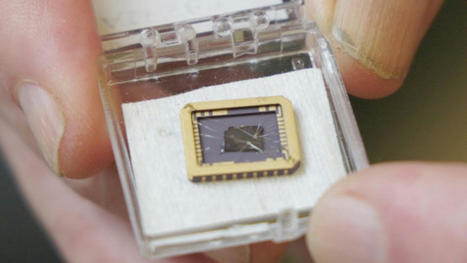


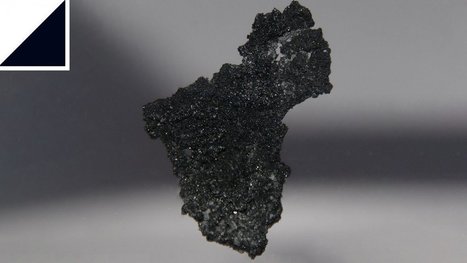

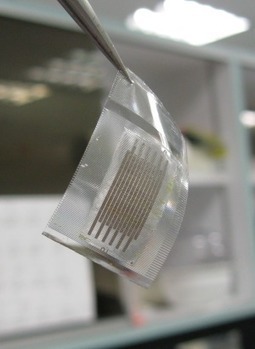
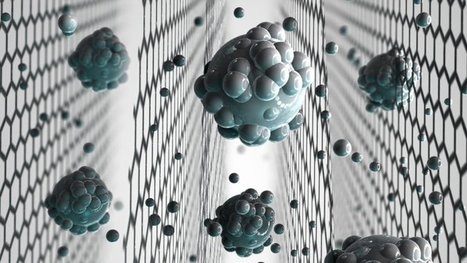
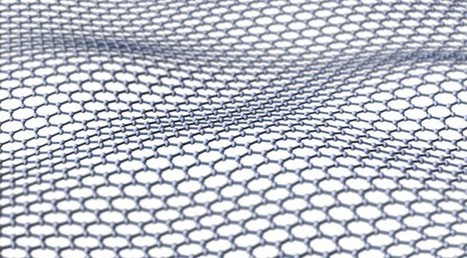
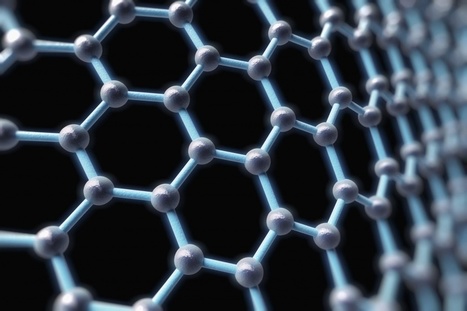
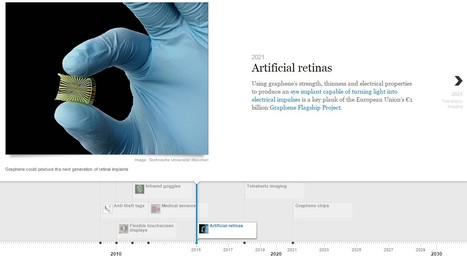
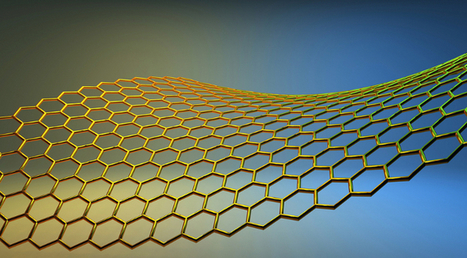


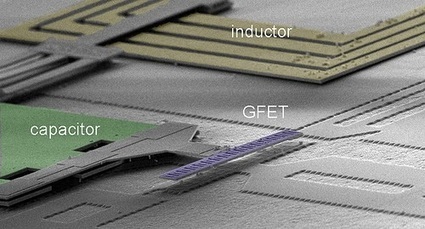
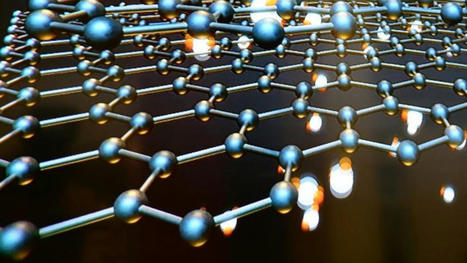


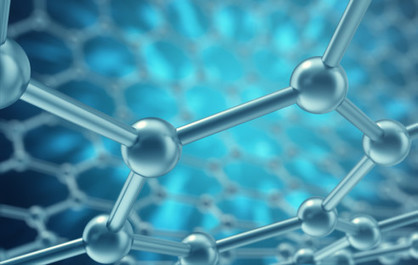
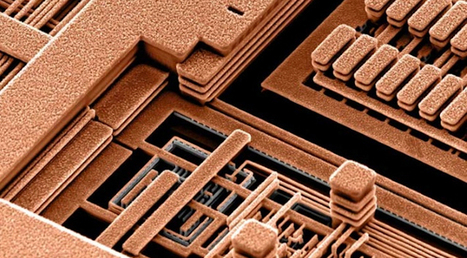




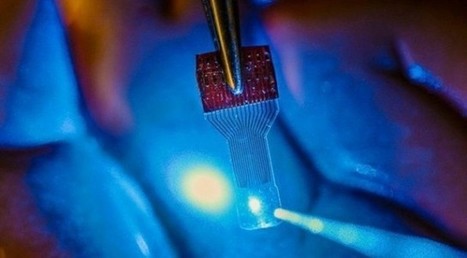
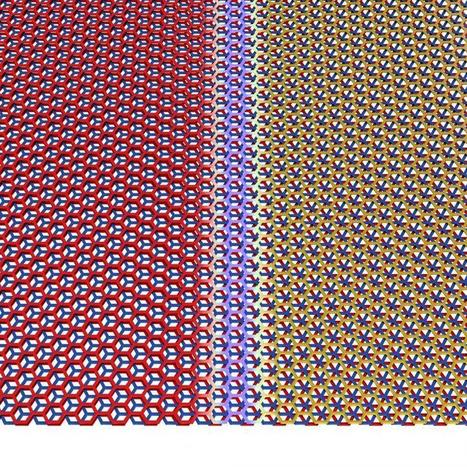
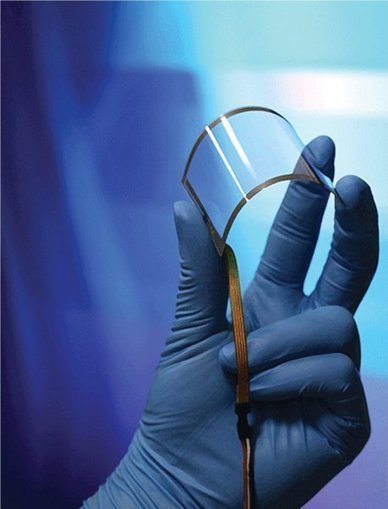
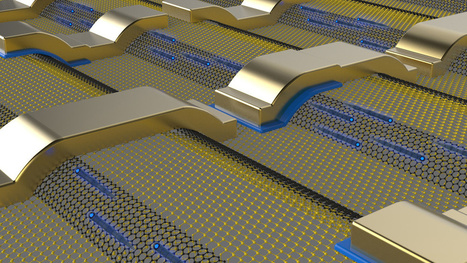





Forscher entwickeln praxistauglichen Graphen-Halbleiter
Eigentlich ist Graphen kein Halbleiter, mit Tricks lässt es sich aber dazu machen. Es verspricht leistungsfähigere Transistoren als Silizium.
Learn more / En savoir plus / Mehr erfahren:
https://www.scoop.it/t/21st-century-innovative-technologies-and-developments/?&tag=Graphene
https://www.scoop.it/topic/21st-century-innovative-technologies-and-developments/?&tag=Research